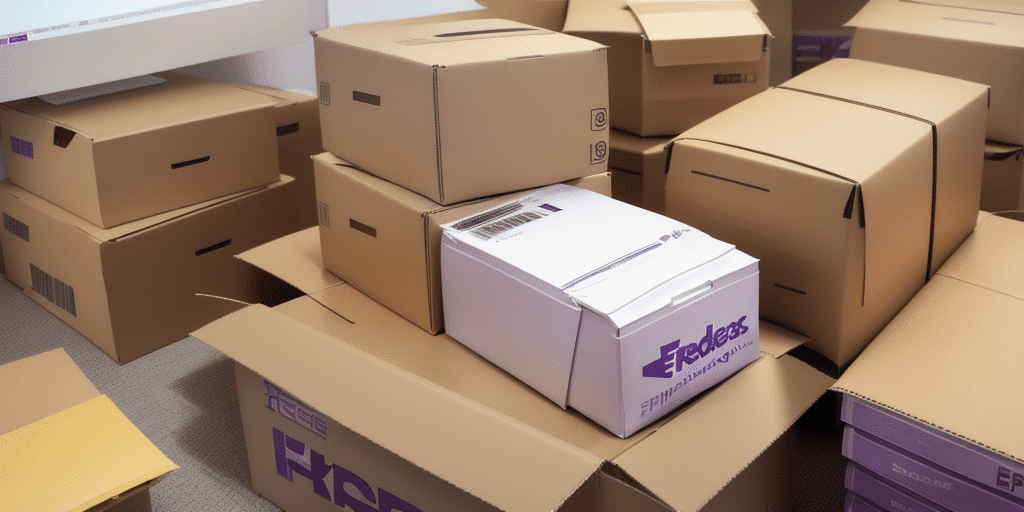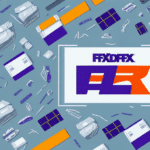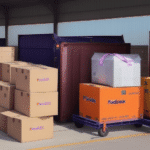Introduction to FedEx Label Processing with Ship Manager
Streamlining your shipping processes can significantly reduce time and costs. Ship Manager from FedEx offers a robust solution to help businesses efficiently manage label processing within FileMaker. This comprehensive guide delves into the fundamentals of FedEx label processing, explores how Ship Manager enhances your workflow, provides a step-by-step setup guide, and shares best practices for data accuracy and troubleshooting common issues.
Understanding the Fundamentals of FedEx Label Processing
Effective label processing is crucial for ensuring timely and accurate package delivery. A FedEx label contains essential information such as the recipient's address, package weight, and a unique tracking number. Additionally, it features a barcode that FedEx scans to track the package throughout its transit.
Maintaining accuracy in label information is paramount. Errors or omissions can lead to delivery delays or lost packages. It's also vital to affix the label correctly to the package, ensuring it's clearly visible and free from obstructions.
For businesses handling large volumes of shipments, FedEx offers batch label processing. This feature allows for the efficient generation and management of multiple labels simultaneously, enhancing overall shipping operations.
Benefits of Using Ship Manager for Shipping Processes
Ship Manager from FedEx simplifies the label generation process with features like batch processing, automatic address validation, and customizable label printing. According to a study by Forbes, businesses that streamline their shipping processes can reduce operational costs by up to 20%.
One of the standout benefits of Ship Manager is real-time shipment tracking. The software enables monitoring the status of packages and sends notifications upon delivery, ensuring you stay informed about your shipping operations and can provide timely updates to customers.
Moreover, Ship Manager offers access to discounted shipping rates. By leveraging these rates, businesses can achieve significant savings, especially when shipping in large volumes.
Setting Up Ship Manager in FileMaker: A Step-by-Step Guide
Integrating Ship Manager with FileMaker involves several steps:
- Create a FedEx Account: Begin by signing up for a FedEx account and requesting an API key, which is essential for integrating Ship Manager with FileMaker.
- Download and Install Ship Manager: Obtain the latest version of Ship Manager from the official FedEx website and follow the installation instructions.
- Connect FileMaker to Ship Manager: Use the provided API key to link your FileMaker application with Ship Manager, enabling seamless label generation directly from FileMaker.
Ensure that your version of FileMaker is compatible with Ship Manager. If you encounter any issues during the setup process, FedEx provides technical support to assist you.
Navigating the Ship Manager Interface for Efficient Label Processing
After setting up Ship Manager in FileMaker, familiarizing yourself with the interface is essential for efficient label processing. The interface offers intuitive options for managing shipments, including:
- Creating Shipments: Easily input shipment details and generate labels.
- Tracking Packages: Monitor the status of your packages in real-time.
- Bulk Label Printing: Generate and print labels for multiple packages simultaneously.
Customization: Ship Manager allows you to customize label templates by adding your company logo, adjusting font styles, and including additional information like order numbers or special instructions. This ensures that your labels are both professional and tailored to your specific needs.
Best Practices for Data Entry and Ensuring Shipment Accuracy
Accurate data entry is critical in label processing to prevent delivery issues. Follow these best practices to ensure shipment information accuracy:
- Double-Check Information: Before generating a label, verify the recipient's address, package weight, and dimensions.
- Use Address Validation: Utilize automatic address validation features to minimize errors caused by typos or incorrect data.
- Proper Classification: Ensure that package contents are correctly classified and labeled, especially for hazardous materials or items requiring special handling.
- Maintain Documentation: Keep detailed records of tracking numbers, delivery dates, and any special instructions to facilitate issue resolution and audit trails.
Troubleshooting Common Issues with Ship Manager and FedEx Labels
Despite its robust features, users may occasionally encounter issues while using Ship Manager. Common problems include:
- Label Printing Errors: Ensure that your printer settings are correctly configured and that labels are loaded properly to prevent printing issues.
- Incorrect Package Weight or Dimensions: Double-check your package measurements to avoid unexpected shipping costs or package rejection.
- Package Damage During Transit: If a package is damaged upon delivery, contact FedEx customer service promptly to file a claim.
- Tracking Issues: Verify that the tracking number is correctly entered and monitor FedEx's service status updates for any disruptions.
For persistent issues, refer to FedEx's online support resources or contact their customer service team for assistance.
Integrating Ship Manager with Other Shipping Solutions in FileMaker
For businesses utilizing multiple carriers, integrating Ship Manager with other shipping solutions can enhance efficiency and reduce errors. Many shipping solutions are compatible with Ship Manager, allowing you to:
- Generate labels for different carriers from a single interface.
- Automate label generation across various carriers, streamlining the shipping process.
Additionally, integration with other solutions can provide access to advanced features such as real-time tracking updates, rate shopping tools, and enhanced address validation. This integration allows you to offer more accurate and efficient shipping options to your customers.
Customizing Label Layouts and Printing Options for Maximum Efficiency
Optimizing label layouts and printing options can significantly improve your shipping workflow. Ship Manager provides various customization options, including:
- Bulk or Individual Label Printing: Choose to print labels for multiple packages at once or for individual packages as needed.
- Label Format Selection: Select from different label formats or customize layouts to meet specific requirements.
- Save Custom Layouts: Save your customized label templates for future use, ensuring consistency and reducing setup time.
- Default Printing Options: Set default printing preferences to streamline your shipping process and maintain uniformity across all labels.
By tailoring label layouts and printing settings to your operational needs, you can enhance both efficiency and accuracy in your shipping process.
Maximizing Time and Cost Savings with Automated Label Processing
Automation is a key driver in reducing operational costs and enhancing efficiency. Ship Manager automates the label generation process, minimizing manual data entry errors and speeding up the shipping workflow. According to Statista, businesses that implement automated shipping solutions can see a reduction in shipping-related costs by up to 15% annually.
In addition to cost savings, automating label processing frees up valuable time, allowing your team to focus on other critical business tasks. Coupled with customizable layouts and printing options, Ship Manager ensures that even complex shipping workflows are handled smoothly and accurately.
Overall, leveraging Ship Manager from FedEx within FileMaker can significantly enhance the accuracy and efficiency of your shipping processes, leading to substantial time and cost savings.
Conclusion
Ship Manager from FedEx is a powerful tool for businesses seeking to optimize their shipping operations within FileMaker. By understanding the fundamentals of FedEx label processing, leveraging the benefits of Ship Manager, following best practices for data accuracy, and effectively managing integrations and customizations, you can streamline your shipping workflow and achieve significant time and cost savings.
Implementing automated label processing not only enhances operational efficiency but also improves customer satisfaction by ensuring timely and accurate deliveries. As shipping demands continue to grow, using robust solutions like Ship Manager becomes increasingly essential for maintaining competitive advantage and operational excellence.






















